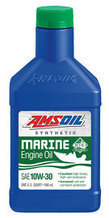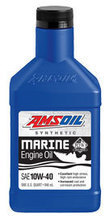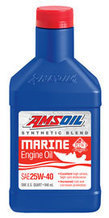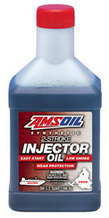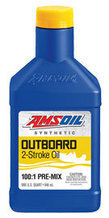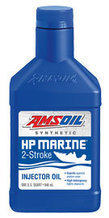INDEPENDENT DEALER
Portland, OR & Clackamas | (503) 329-9004

Choosing the Best Boat Engine Oil
Boating and fishing are popular activities for people across the nation, with the 2013 Special Report on Fishing and Boating indicating that 47 million Americans went fishing in 2012, 46.8 million participated in a boating activity and 21.2 million owned a boat.
Most anglers work full-time and have precious little time for fishing. To maximize their time on the water, they need lubricants that protect their motors from wear despite challenging operating conditions.
Much like automotive engines, marine motors are becoming more advanced and tougher on oil. Four-stroke motors are becoming lighter and produce more low-end torque than before. They’ve largely closed the performance gap on two-stroke motors. In fact, sales of four-stroke motors are on the rise, while two-stroke sales have declined.
Boat Engine Options
Boat applications can be broken down into four primary methods of propulsion. Available in both two- and four-stroke designs, outboard motors are self-contained units (engine, gearbox and propeller/jet drive) that mount outside the hull of the boat; inboard motors are enclosed within the hull; sterndrive (inboard/outboard) designs situate the engine forward of the transom, with the drive unit outside the hull; and jet motors propel the boat by drawing water into a pump and ejecting it out the stern. According to the 2013 Special Report on Fishing and Boating, 53.1 percent of boats are powered by outboard motors, while 16 percent feature inboard motors, 15 percent have sterndrive motors, 3.3 percent have jet motors and 12.7 percent are not motorized.
Demanding Operating Conditions
Marine motors are characterized by high-rpm operation that can shear the molecular structure of oil and reduce its ability to protect against wear. On average, a marine motor propelling a boat 30 mph operates at 5,000 rpm,while an automotive engine at 60 mph operates around 2,000 rpm. The added heat and stress invite wear and deposits. Heavy deposits can cause piston rings to stick. Stuck rings lead to compression loss, which reduces power. Stuck rings can also lead to catastrophic piston scuffing.
The marine operating environment creates additional challenges for oil. Marine motors are constantly exposed to humid air. The moisture the motor ingests increases the likelihood of corrosion compared to automotive engines. Water-cooled marine motors also run at lower temperatures than air-cooled engines, so moisture in the oil doesn’t evaporate as readily. Plus, when the motor is shut down for the day, moist air continues to enter the engine as it cools, increasing the risk for corrosion, especially if the oil doesn’t contain anti-corrosion inhibitors.
AMSOIL Products for Marine Applications
A successful day fishing or boating hinges on the reliability of marine engines. Deposits and wear from high-rpm operation and all-day trolling can limit performance and even shorten engine life, especially in newer engines that run hotter and produce more power. AMSOIL synthetic marine lubricants are formulated to control harmful deposits and wear in outboard, inboard and sterndrive motors.
AMSOIL products are ideal for boaters because they effectively reduce time and money spent on maintenance and increase fuel economy. In fact, research reveals maintenance and fuel costs are foremost on the minds of boaters. The top three reasons ex-boaters cited for giving up their boats are cost of maintenance/ storage (41.1%), cost of fuel (21.5%) and time constraints (20.6%).
Marine-Specific Four-Stroke Formulations
AMSOIL 10W-30 and 10W-40 Synthetic Marine Engine Oil and new AMSOIL 25W-40 Synthetic-Blend Marine Engine Oil are shear-stable formulations that deliver maximum wear protection in four-stroke marine applications. They are formulated with advanced additives to guard against corrosion common to marine environments.
Marine-Specific Two-Stroke Formulations
AMSOIL synthetic two-stoke marine oils provide the same great benefits as always, including outstanding wear protection and low smoke. AMSOIL HP Marine® Synthetic 2-Stroke Oil is excellent in modern direct-fuel-injected (DFI) motors that generate increased heat and friction compared to their predecessors. It provides increased lubricity for reduced wear during normal and lean-mix operation. In field testing, HP Marine completely prevented piston skirt and cylinder bore scuffing (see http://www.amsoil.com/prooffor details.)
AMSOIL Synthetic 2-Stroke Injector Oil protects against wear and piston scuffing while providing the added benefit of year-round use as a snowmobile oil.
For pre-mix applications, AMSOIL Outboard 100:1 Pre-Mix Synthetic 2-Stroke Oil contains a heavy dose of low-temperature dispersant additives that excel at reducing varnish, carbon and deposit formation in water-cooled motors. Its low-smoke, low-odor, low-toxicity properties produce fewer emissions at 100:1 mix ratios than oils mixed at 50:1, benefitting operators and the environment.
Protect your boat for uninterrupted fun on the water with superior protection against engine wear, rust and corrosion.
AMSOIL synthetic lubricants are essential. Contact Bill Rigdon for more information about the best boat engine oil in Portland, OR and surrounding areas. We also have more marine products for your fishing boat, pleasure boat, personal watercraft, pontoon boat or diesel boat.
CALL: (503) 329-9004
Or shop online directly in this page.
If you want to see more products, click on the button below.

Most anglers, boaters and personal watercraft owners are as interested in protecting our waterways for future generations as they are in enjoying them now. HP Marine® Synthetic 2-Stroke Oil offers a unique combination of high performance and low aquatic toxicity. It has passed stringent tests developed by the Organisation for Economic Cooperation and Development to measure the effects of oil-contaminated water on common marine organisms.
Testing of HP Marine revealed a 100 percent survival rate of Daphnia Magna neonates (water fleas) and fathead minnows exposed to increasing concentrations of HP Marine mixed in water. In concentrations of less than 25 percent, algae (Pseudokirchneriella subcapitata) showed no reduction in growth or reproduction rates. These test results confirm that HP Marine is a smart and environmentally safe option for boaters and personal watercraft owners.

